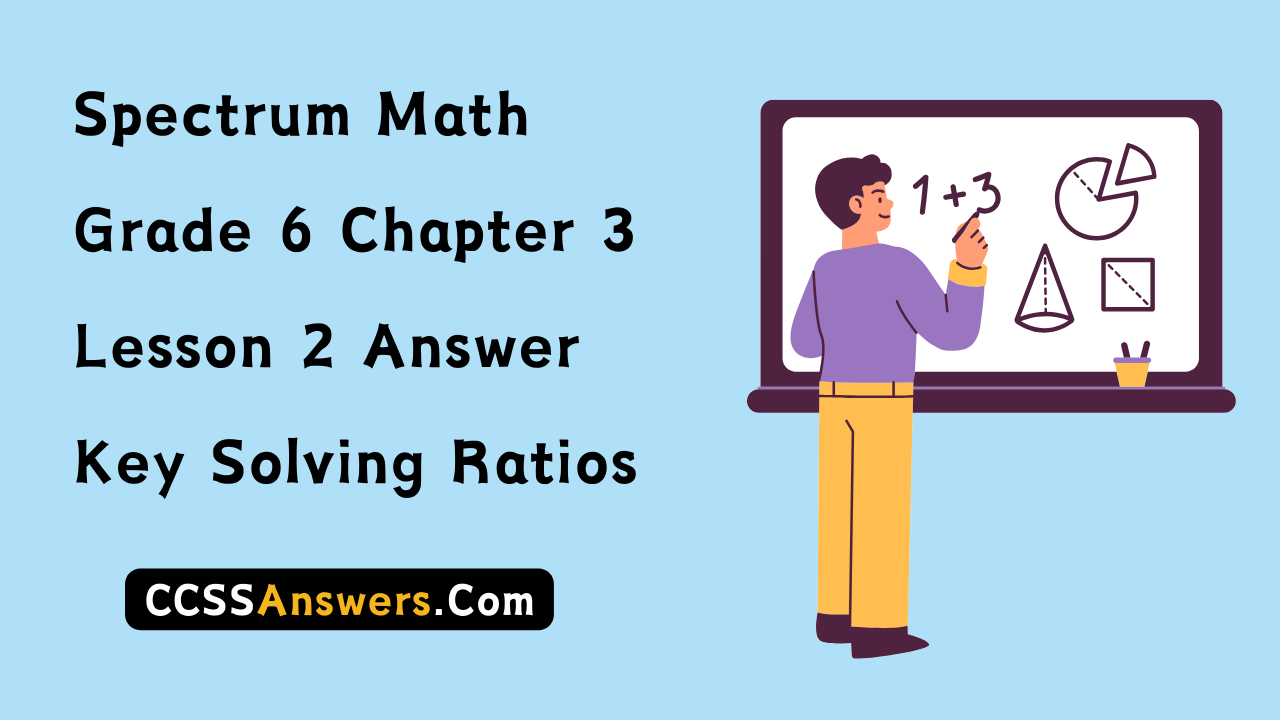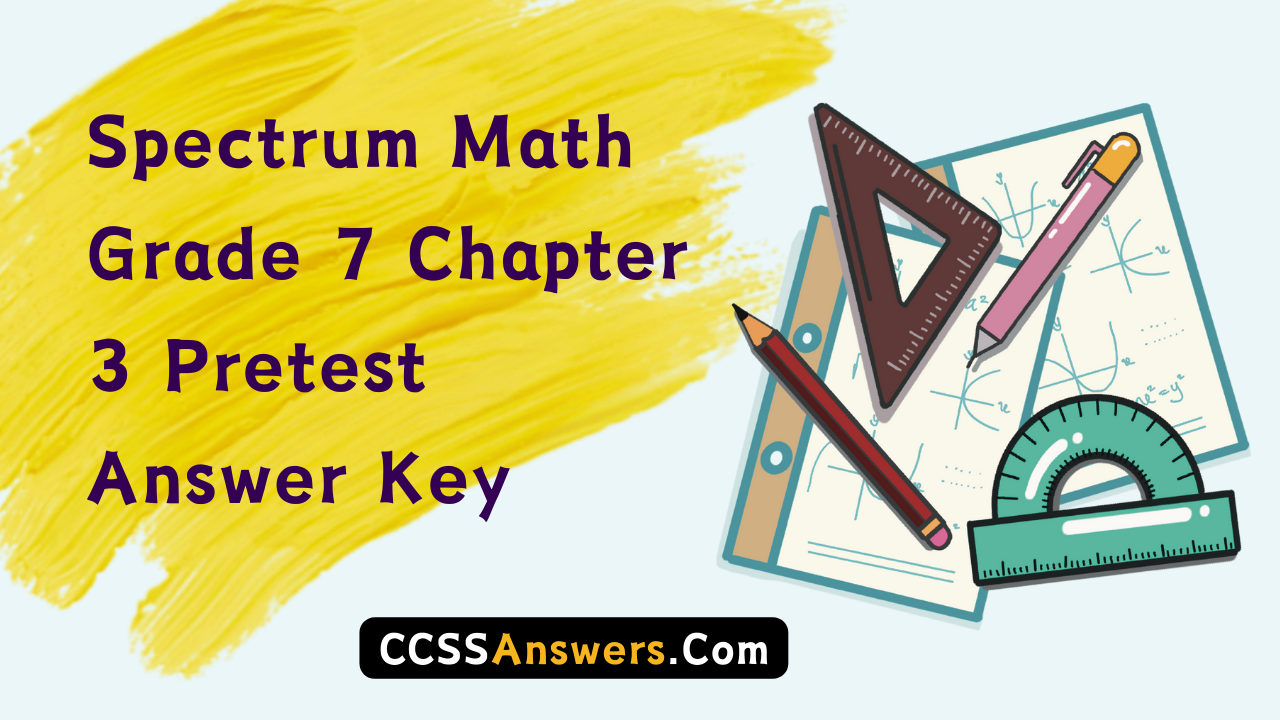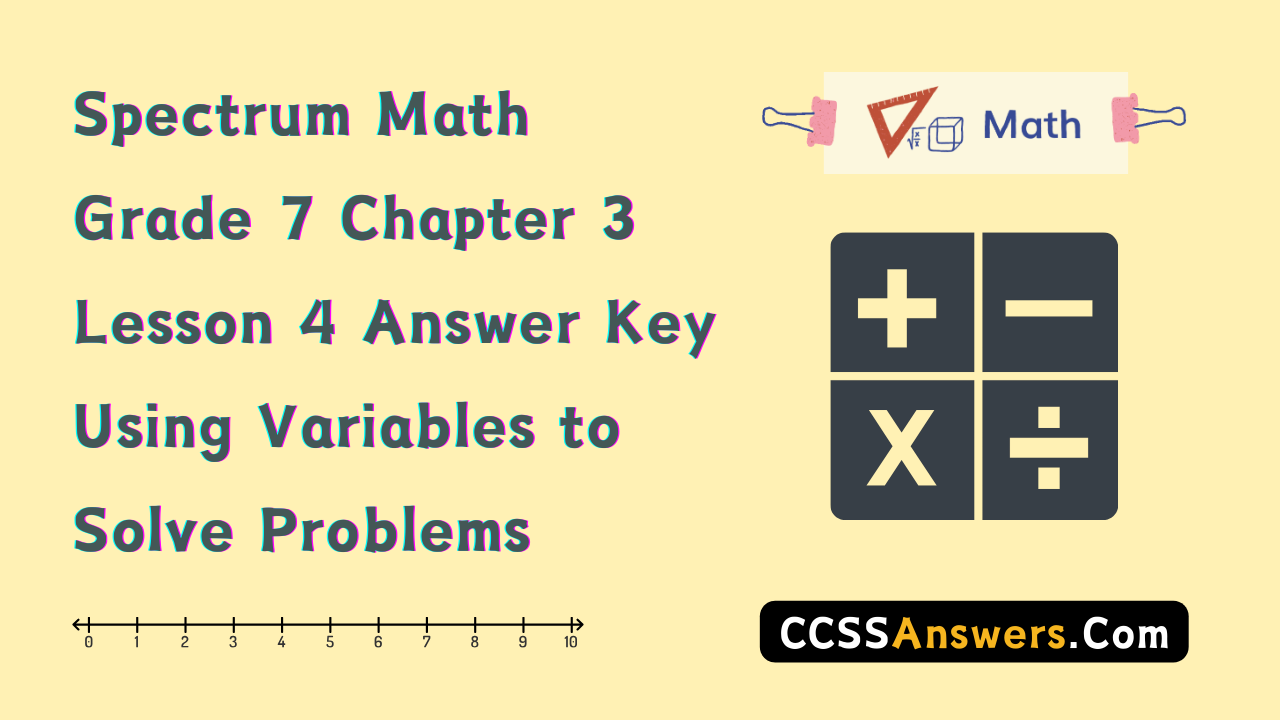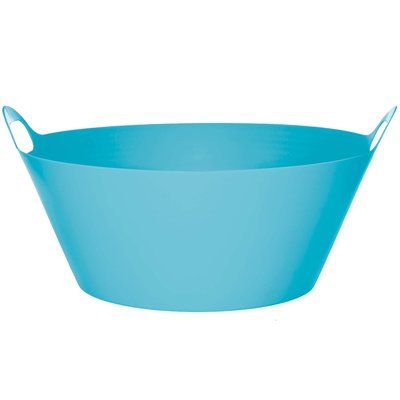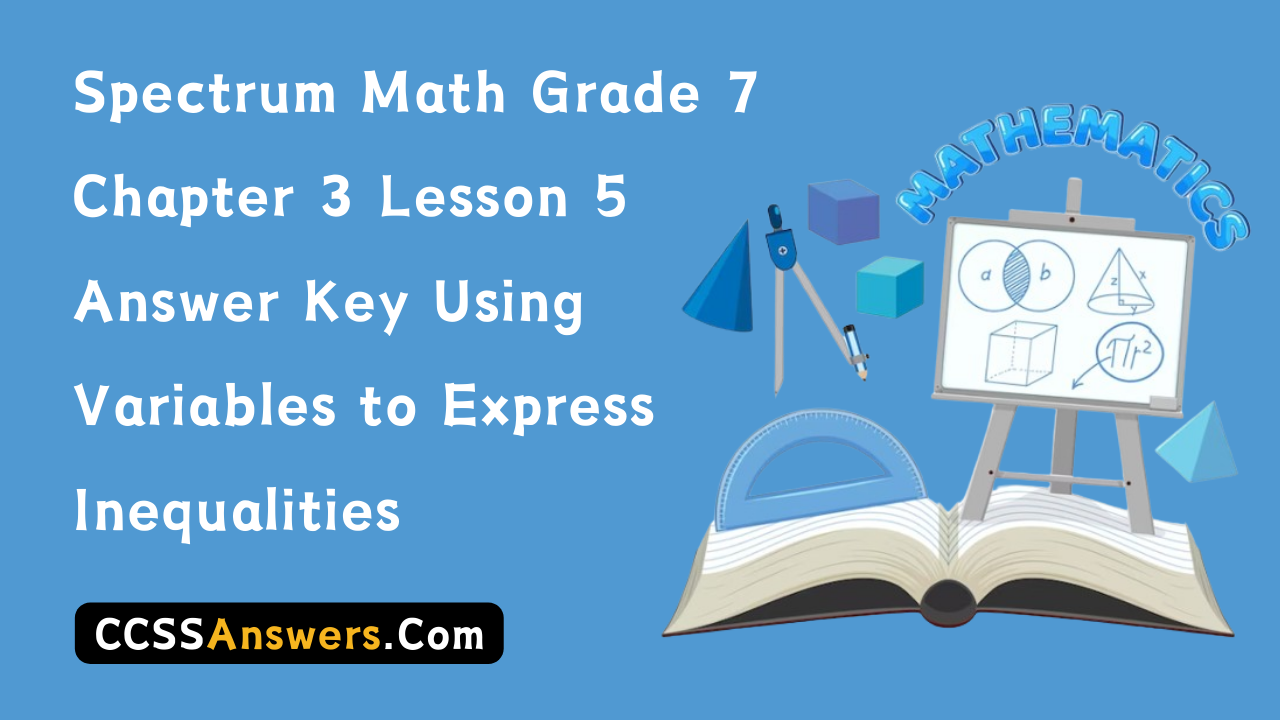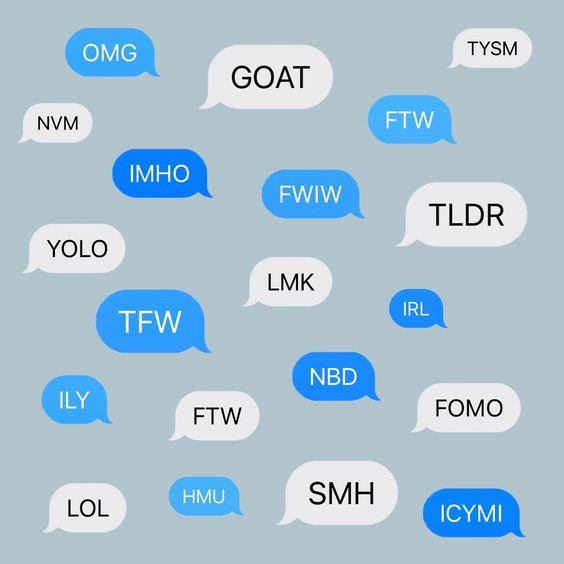Go through the Spectrum Math Grade 6 Answer Key Chapter 3 Lesson 3.2 Solving Ratios and get the proper assistance needed during your homework.
Spectrum Math Grade 6 Chapter 3 Lesson 3.2 Solving Ratios Answers Key
A proportion can be used in problem solving.
The ratio of apples to oranges is 4 to 5. There are 20 oranges in the basket.
How many apples are there?
\(\frac{4}{5}\) = \(\frac{n}{20}\) Set up a proportion, using n for the missing number.
4 × 20 = 5 × n Cross-multiply.
\(\frac{80}{5}\) = n Solve for n.
16 = n There are 16 apples.
Solve.
Question 1.
a. \(\frac{1}{3}\) = \(\frac{n}{24}\) ___________
Answer:
The value of n in \(\frac{1}{3}\) = \(\frac{n}{24}\) is 8.
Explanation:
\(\frac{1}{3}\) = \(\frac{n}{24}\)
=> 1 × 24 = n × 3
=> 24 = 3n
=> 24 ÷ 3 = n
=> 8 = n.
b. \(\frac{4}{9}\) = \(\frac{n}{36}\) ___________
Answer:
The value of n in \(\frac{4}{9}\) = \(\frac{n}{36}\) is 16.
Explanation:
\(\frac{4}{9}\) = \(\frac{n}{36}\)
=> 4 × 36 = n × 9
=>144 = 9n
=> 144 ÷ 9 = n
=> 16 = n.
c. \(\frac{5}{45}\) = \(\frac{n}{9}\) ___________
Answer:
The value of n in \(\frac{5}{45}\) = \(\frac{n}{9}\) is 1.
Explanation:
\(\frac{5}{45}\) = \(\frac{n}{9}\)
=> 5 × 9 = n × 45
=> 45 = 45n
=> 45 ÷ 45 = n
=> 1 = n.
Question 2.
a. \(\frac{3}{5}\) = \(\frac{n}{15}\) ___________
Answer:
The value of n in \(\frac{3}{5}\) = \(\frac{n}{15}\) is 9.
Explanation:
\(\frac{3}{5}\) = \(\frac{n}{15}\)
=> 3 × 15 = n × 5
=> 45 = 5n
=> 45 ÷ 5 = n
=> 9 = n.
b. \(\frac{10}{70}\) = \(\frac{n}{7}\) ___________
Answer:
The value of n in \(\frac{10}{70}\) = \(\frac{n}{7}\) is 1.
Explanation:
\(\frac{10}{70}\) = \(\frac{n}{7}\)
=> 10 × 7 = n × 70
=> 70 = 70n
=> 70 ÷ 70 = n
=> 1 = n.
c. \(\frac{25}{40}\) = \(\frac{n}{16}\) ___________
Answer:
The value of n in \(\frac{25}{40}\) = \(\frac{n}{16}\) is 10.
Explanation:
\(\frac{25}{40}\) = \(\frac{n}{16}\)
=> 25 × 16 = n × 40
=> 400 = 40n
=> 400 ÷ 40 = n
=> 10 = n.
Question 3.
a. \(\frac{7}{12}\) = \(\frac{n}{36}\) ___________
Answer:
The value of n in \(\frac{7}{12}\) = \(\frac{n}{36}\) is 21.
Explanation:
\(\frac{7}{12}\) = \(\frac{n}{36}\)
=> 7 × 36 = n × 12
=> 252 = 12n
=> 252 ÷ 12 = n
=> 21 =n.
b. \(\frac{13}{26}\) = \(\frac{n}{4}\) ___________
Answer:
The value of n in \(\frac{13}{26}\) = \(\frac{n}{4}\) is 2.
Explanation:
\(\frac{13}{26}\) = \(\frac{n}{4}\)
=> 13 × 4 = n × 26
=> 52 = 26n
=> 52 ÷ 26 = n
=> 2 = n.
c. \(\frac{7}{1}\) = \(\frac{n}{3}\) ___________
Answer:
The value of n in \(\frac{7}{1}\) = \(\frac{n}{3}\) is 21.
Explanation:
\(\frac{7}{1}\) = \(\frac{n}{3}\)
=> 7 × 3 = n × 1
=> 21 = 1n
=> 21 ÷ 1 = n
=> 21 = n.
Question 4.
a. \(\frac{8}{5}\) = \(\frac{n}{40}\) ___________
Answer:
The value of n in \(\frac{8}{5}\) = \(\frac{n}{40}\) is 64.
Explanation:
\(\frac{8}{5}\) = \(\frac{n}{40}\)
=> 8 × 40 = n × 5
=> 320 = 5n
=> 320 ÷ 5 = n
=> 64 = n.
b. \(\frac{2}{6}\) = \(\frac{n}{33}\) ___________
Answer:
The value of n in \(\frac{2}{6}\) = \(\frac{n}{33}\) is 11.
Explanation:
\(\frac{2}{6}\) = \(\frac{n}{33}\)
=> 2 × 33 = n × 6
=> 66 = 6n
=> 66 ÷ 6 = n
=> 11 = n.
c. \(\frac{5}{13}\) = \(\frac{n}{39}\) ___________
Answer:
The value of n in latex]\frac{5}{13}[/latex] = \(\frac{n}{39}\) is 15.
Explanation:
latex]\frac{5}{13}[/latex] = \(\frac{n}{39}\)
=> 5 × 39 = n × 13
=> 195 = 13n
=> 195 ÷ 13 = n
=> 15 = n.
Question 5.
a. \(\frac{5}{6}\) = \(\frac{n}{18}\) ___________
Answer:
The value of n in \(\frac{5}{6}\) = \(\frac{n}{18}\) is 15.
Explanation:
\(\frac{5}{6}\) = \(\frac{n}{18}\)
=> 5 × 18 = n × 6
=> 90 = 6n
=> 90 ÷ 6 = n
=> 15 = n.
b. \(\frac{9}{8}\) = \(\frac{n}{32}\) ___________
Answer:
The value of n in \(\frac{9}{8}\) = \(\frac{n}{32}\) is 36.
Explanation:
\(\frac{9}{8}\) = \(\frac{n}{32}\)
=> 9 × 32 = n × 8
=> 288 = 8n
=> 288 ÷ 8 = n
=> 36 = n.
c. \(\frac{2}{3}\) = \(\frac{n}{15}\) ___________
Answer:
The value of n in \(\frac{2}{3}\) = \(\frac{n}{15}\) is 10.
Explanation:
\(\frac{2}{3}\) = \(\frac{n}{15}\)
=> 2 × 15 = n × 3
=> 30 = 3n
=> 30 ÷ 3 = n
=> 10 = n.
A proportion can be used in problem-solving.
The ratio of apples to oranges is 4 to 5. There are 20 oranges in the basket. How many apples are there?
\(\frac{4}{5}\) = \(\frac{4}{20}\) ___________ Set up a proportion, using n for the missing number.
4 × 20 = 5 × n Cross-multiply
\(\frac{80}{5}\) =n Solve for n
16 = n There are 16 apples.
Solve.
Question 1.
a. \(\frac{1}{3}\) = \(\frac{n}{24}\) _________
Answer:
The value of n in \(\frac{1}{3}\) = \(\frac{n}{24}\) is 8.
Explanation:
\(\frac{1}{3}\) = \(\frac{n}{24}\)
=> 1 × 24 = n × 3
=> 24 = 3n
=> 24 ÷ 3 = n
=> 8 = n.
b. \(\frac{4}{9}\) = \(\frac{n}{36}\) _________
Answer:
The value of n in \(\frac{4}{9}\) = \(\frac{n}{36}\) is 16.
Explanation:
\(\frac{4}{9}\) = \(\frac{n}{36}\)
=> 4 × 36 = n × 9
=> 144 = 9n
=> 144 ÷ 9 = n
=> 16 = n.
c. \(\frac{5}{45}\) = \(\frac{n}{9}\) _________
Answer:
The value of n in \(\frac{5}{45}\) = \(\frac{n}{9}\) is 1.
Explanation:
\(\frac{5}{45}\) = \(\frac{n}{9}\)
= 4 × 9 = n × 45
=> 45 = 45n
=> 45 ÷ 45 = n
=> 1 = n.
Question 2.
a. \(\frac{3}{5}\) = \(\frac{n}{15}\) _________
Answer:
The value of n in \(\frac{3}{5}\) = \(\frac{n}{15}\) is 9.
Explanation:
\(\frac{3}{5}\) = \(\frac{n}{15}\)
=> 3 × 15 = n × 5
=> 45 = 5n
=> 45 ÷ 5 = n
=> 9 = n.
b. \(\frac{10}{70}\) = \(\frac{n}{7}\) _________
Answer:
The value of n in \(\frac{10}{70}\) = \(\frac{n}{7}\) is 1.
Explanation:
\(\frac{10}{70}\) = \(\frac{n}{7}\)
=> 10 × 7 = n × 70
=> 70 = 70n
=> 70 ÷ 70 = n
=> 1 = n.
c. \(\frac{25}{40}\) = \(\frac{n}{16}\) _________
Answer:
The value of n in \(\frac{25}{40}\) = \(\frac{n}{16}\) is 10.
Explanation:
\(\frac{25}{40}\) = \(\frac{n}{16}\)
=> 25 × 16 = n × 40
=> 400 = 40n
=> 400 ÷ 40 = n
=> 10 = n.
Question 3.
a. \(\frac{7}{12}\) = \(\frac{n}{36}\) _________
Answer:
The value of n in \(\frac{7}{12}\) = \(\frac{n}{36}\) is 21.
Explanation:
\(\frac{7}{12}\) = \(\frac{n}{36}\)
=> 7 × 36 = n × 12
=> 252 = 12n
=> 252 ÷ 12 = n
=> 21 = n.
b. \(\frac{13}{26}\) = \(\frac{n}{4}\) _________
Answer:
The value of n in \(\frac{13}{26}\) = \(\frac{n}{4}\) is 2.
Explanation:
\(\frac{13}{26}\) = \(\frac{n}{4}\)
=> 13 × 4 = n × 26
=> 52 = 26n
=> 52 ÷ 26 = n
=> 2 = n.
c. \(\frac{7}{1}\) = \(\frac{n}{3}\) _________
Answer:
The value of n in \(\frac{7}{1}\) = \(\frac{n}{3}\) is 21.
Explanation:
\(\frac{7}{1}\) = \(\frac{n}{3}\)
= 7 × 3 = n × 1
=> 21 = 1n
=> 21 ÷ 1 = n
=> 21 = n.
Question 4.
a. \(\frac{8}{5}\) = \(\frac{n}{40}\) _________
Answer:
The value of n in \(\frac{8}{5}\) = \(\frac{n}{40}\) is 64.
Explanation:
\(\frac{8}{5}\) = \(\frac{n}{40}\)
=> 8 × 40 = n × 5
=> 320 = 5n
=> 320 ÷ 5 = n
=> 64 = n.
b. \(\frac{2}{6}\) = \(\frac{n}{33}\) _________
Answer:
The value of n in \(\frac{2}{6}\) = \(\frac{n}{33}\) is 11.
Explanation:
\(\frac{2}{6}\) = \(\frac{n}{33}\)
=> 2 × 33 = n × 6
=> 66 = 6n
=> 66 ÷ 6 = n
=> 11 = n.
c. \(\frac{5}{13}\) = \(\frac{n}{39}\) _________
Answer:
The value of n in \(\frac{5}{13}\) = \(\frac{n}{39}\) is 15.
Explanation:
\(\frac{5}{13}\) = \(\frac{n}{39}\)
=> 5 × 39 = n × 13
=> 195 = 13n
=> 195 ÷ 13 = n
=> 15 = n.
Question 5.
a. \(\frac{5}{6}\) = \(\frac{n}{18}\) _________
Answer:
The value of n in \(\frac{5}{6}\) = \(\frac{n}{18}\) is 15.
Explanation:
\(\frac{5}{6}\) = \(\frac{n}{18}\)
=> 5 × 18 = n × 6
=> 90 = 6n
=> 90 ÷ 6 = n
=> 15 = n.
b. \(\frac{9}{8}\) = \(\frac{n}{32}\) _________
Answer:
The value of n in \(\frac{9}{8}\) = \(\frac{n}{32}\) is 36.
Explanation:
\(\frac{9}{8}\) = \(\frac{n}{32}\)
=> 9 × 32 = n × 8
=> 288 = 8n
=> 288 ÷ 8 = n
=> 36 = n.
c. \(\frac{2}{3}\) = \(\frac{n}{15}\) _________
Answer:
The value of n in \(\frac{2}{3}\) = \(\frac{n}{15}\) is 10.
Explanation:
\(\frac{2}{3}\) = \(\frac{n}{15}\)
=> 2 × 15 = n × 3
=> 30 = 3n
=> 30 ÷ 3 = n
=> 10 = n.
The missing number can appear any place in a proportion. Solve the same way.
\(\frac{2}{3}\) = \(\frac{6}{n}\)
3 × 6 = 2 × n
\(\frac{18}{2}\) = n
9 = n
\(\frac{3}{5}\) = \(\frac{n}{10}\)
3 × 10 = 5 × n
\(\frac{30}{5}\) = n
6 = n
\(\frac{3}{n}\) = \(\frac{6}{8}\)
3 × 8 = 6 × n
\(\frac{24}{6}\) = n
4 = n
\(\frac{n}{4}\) = \(\frac{3}{6}\)
4 × 3 = 6 × n
\(\frac{12}{6}\) = n
2 = n
Solve.
Question 1.
a. \(\frac{n}{3}\) = \(\frac{3}{9}\) _________
Answer:
The value of n in \(\frac{n}{3}\) = \(\frac{3}{9}\) is 1.
Explanation:
\(\frac{n}{3}\) = \(\frac{3}{9}\)
=> n × 9 = 3 × 3
=> 9n = 9
=> n = 9 ÷ 9
=> n = 1.
b. \(\frac{5}{3}\) = \(\frac{15}{n}\) _________
Answer:
The value of n in \(\frac{5}{3}\) = \(\frac{15}{n}\) is 9.
Explanation:
\(\frac{5}{3}\) = \(\frac{15}{n}\)
=> 5 × n = 15 × 3
=> 5n = 45
=> n = 45 ÷ 5
=> n = 9.
c. \(\frac{2}{n}\) = \(\frac{1}{4}\) _________
Answer:
The value of n in \(\frac{2}{n}\) = \(\frac{1}{4}\) is 8.
Explanation:
\(\frac{2}{n}\) = \(\frac{1}{4}\)
= 2 × 4 = 1 × n
=> 8 = 1n
=> 8 ÷ 1 = n
=> 8 = n.
Question 2.
a. \(\frac{15}{30}\) = \(\frac{2}{n}\) _________
Answer:
The value of n in \(\frac{15}{30}\) = \(\frac{2}{n}\) is 4.
Explanation:
\(\frac{15}{30}\) = \(\frac{2}{n}\)
=> 15 × n = 2 × 30
=> 15n = 60
=> n = 60 ÷ 15
=> n = 4.
b. \(\frac{4}{6}\) = \(\frac{n}{24}\) _________
Answer:
The value of n in \(\frac{4}{6}\) = \(\frac{n}{24}\) is 16.
Explanation:
\(\frac{4}{6}\) = \(\frac{n}{24}\)
=> 4 × 24 = n × 6
=> 96 = 6n
=> 96 ÷ 6 = n
=> 16 = n.
c. \(\frac{n}{7}\) = \(\frac{15}{21}\) _________
Answer:
The value of n in \(\frac{n}{7}\) = \(\frac{15}{21}\) is 5.
Explanation:
\(\frac{n}{7}\) = \(\frac{15}{21}\)
=> n × 21 = 15 × 7
=> 21n = 105
=> n = 105 ÷ 21
=> n = 5.
Question 3.
a. \(\frac{6}{n}\) = \(\frac{15}{20}\) _________
Answer:
The value of n in \(\frac{6}{n}\) = \(\frac{15}{20}\) is 8.
Explanation:
\(\frac{6}{n}\) = \(\frac{15}{20}\)
=> 6 × 20 = 15 × n
=> 120 = 15n
=> 120 ÷ 15 = n
=> 8 = n.
b. \(\frac{n}{12}\) = \(\frac{9}{18}\) _________
Answer:
The value of n in \(\frac{n}{12}\) = \(\frac{9}{18}\) is 6.
Explanation:
\(\frac{n}{12}\) = \(\frac{9}{18}\)
=> n × 18 = 9 × 12
=> 18n = 108
=> n = 108 ÷ 18
=> n = 6.
c. \(\frac{9}{2}\) = \(\frac{27}{n}\) _________
Answer:
The value of n in \(\frac{9}{2}\) = \(\frac{27}{n}\) is 6.
Explanation:
\(\frac{9}{2}\) = \(\frac{27}{n}\)
=> 9 × n = 27 × 2
=> 9n = 54
=> n = 54 ÷ 9
=> n = 6.
Question 4.
a. \(\frac{7}{9}\) = \(\frac{n}{63}\) _________
Answer:
The value of n in \(\frac{7}{9}\) = \(\frac{n}{63}\) is 49.
Explanation:
\(\frac{7}{9}\) = \(\frac{n}{63}\)
=> 7 × 63 = n × 9
=> 441 = 9n
=> 441 ÷ 9 = n
=> 49 = n.
b. \(\frac{15}{n}\) = \(\frac{12}{4}\) _________
Answer:
The value of n in \(\frac{15}{n}\) = \(\frac{12}{4}\) is 5.
Explanation:
\(\frac{15}{n}\) = \(\frac{12}{4}\)
=> 15 × 4 = 12 × n
=> 60 = 12n
=> 60 ÷ 12 = n
=> 5 = n.
c. \(\frac{40}{100}\) = \(\frac{n}{25}\) _________
Answer:
The value of n in \(\frac{40}{100}\) = \(\frac{n}{25}\) is 10.
Explanation:
\(\frac{40}{100}\) = \(\frac{n}{25}\)
=> 40 × 25 = n × 100
=> 1000 = 100n
=> 1000 ÷ 100 = n
=> 10 = n.
Question 5.
a. \(\frac{35}{n}\) = \(\frac{4}{8}\) _________
Answer:
The value of n in \(\frac{35}{n}\) = \(\frac{4}{8}\) is 70.
Explanation:
\(\frac{35}{n}\) = \(\frac{4}{8}\)
=> 35 × 8 = 4 × n
=> 280 = 4n
=> 280 ÷ 4 = n
=> 70 = n.
b. \(\frac{16}{4}\) = \(\frac{36}{n}\) _________
Answer:
The value of n in \(\frac{16}{4}\) = \(\frac{36}{n}\) is 9.
Explanation:
\(\frac{16}{4}\) = \(\frac{36}{n}\)
=> 16 × n = 36 × 4
=>16n = 144
=> n = 144 ÷ 16
=> n = 9.
c. \(\frac{n}{12}\) = \(\frac{25}{30}\) _________
Answer:
The value of n in \(\frac{n}{12}\) = \(\frac{25}{30}\) is 10.
Explanation:
\(\frac{n}{12}\) = \(\frac{25}{30}\)
=> n × 30 = 25 × 12
=> 30n = 300
=> n = 300 ÷ 30
=> n = 10.
